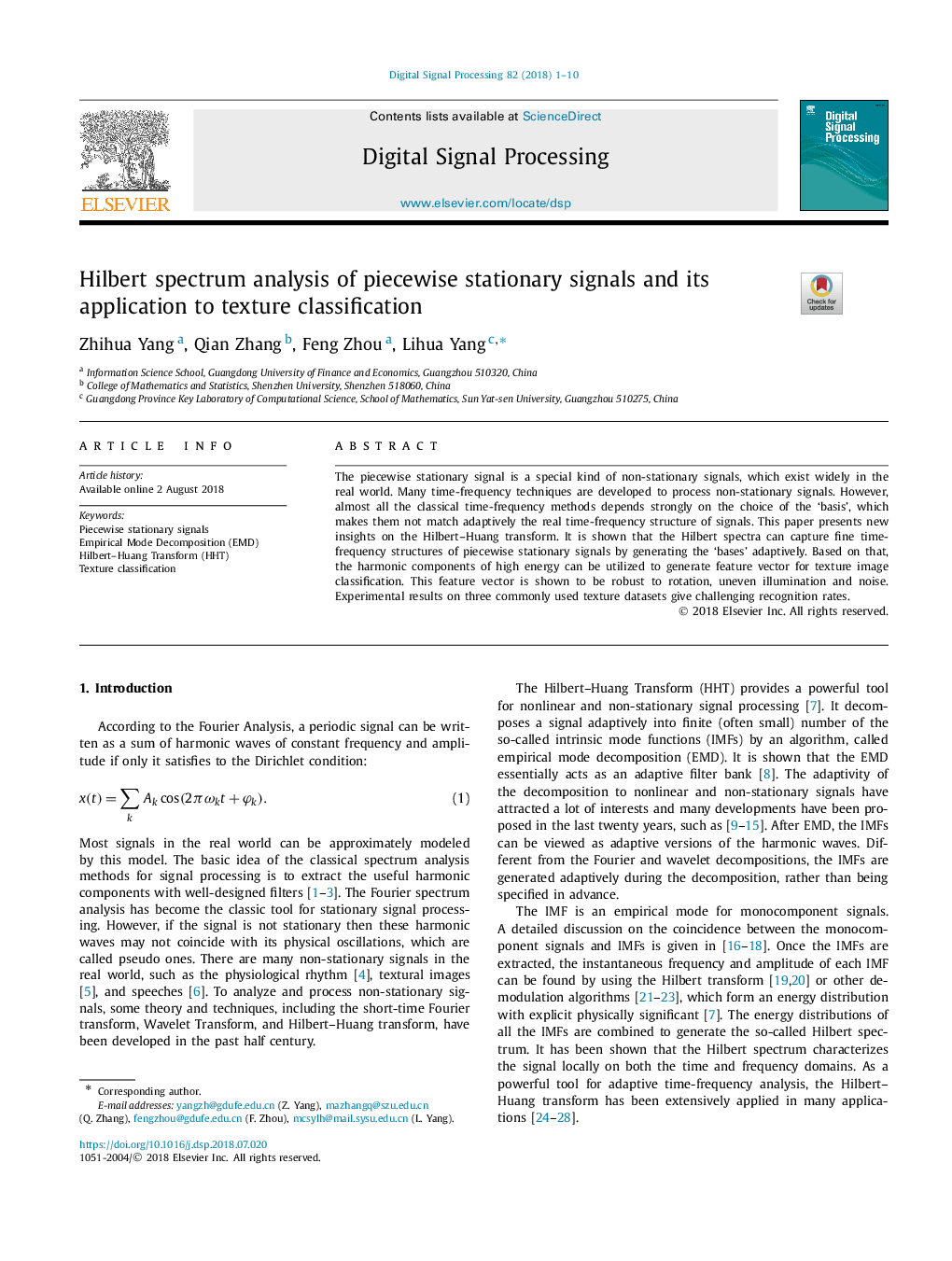| Article ID | Journal | Published Year | Pages | File Type |
|---|---|---|---|---|
| 6951589 | Digital Signal Processing | 2018 | 10 Pages |
Abstract
The piecewise stationary signal is a special kind of non-stationary signals, which exist widely in the real world. Many time-frequency techniques are developed to process non-stationary signals. However, almost all the classical time-frequency methods depends strongly on the choice of the 'basis', which makes them not match adaptively the real time-frequency structure of signals. This paper presents new insights on the Hilbert-Huang transform. It is shown that the Hilbert spectra can capture fine time-frequency structures of piecewise stationary signals by generating the 'bases' adaptively. Based on that, the harmonic components of high energy can be utilized to generate feature vector for texture image classification. This feature vector is shown to be robust to rotation, uneven illumination and noise. Experimental results on three commonly used texture datasets give challenging recognition rates.
Related Topics
Physical Sciences and Engineering
Computer Science
Signal Processing
Authors
Zhihua Yang, Qian Zhang, Feng Zhou, Lihua Yang,
